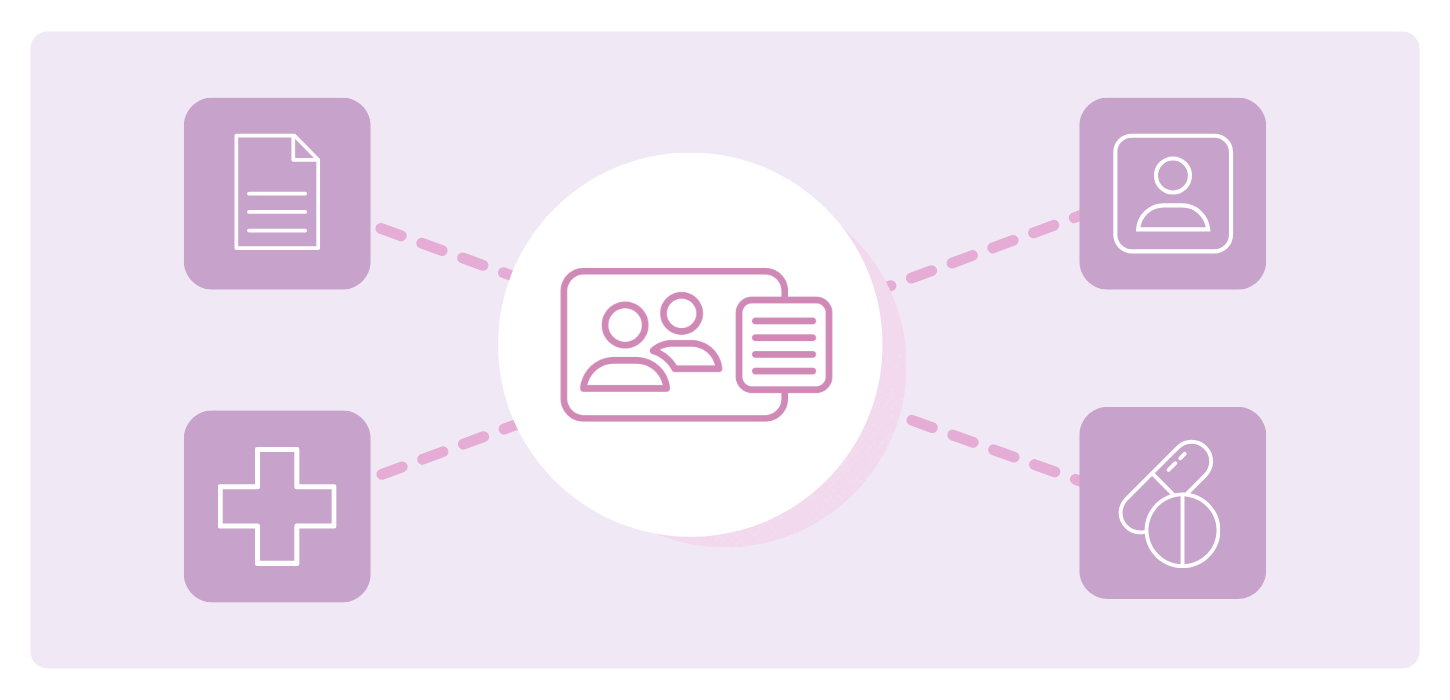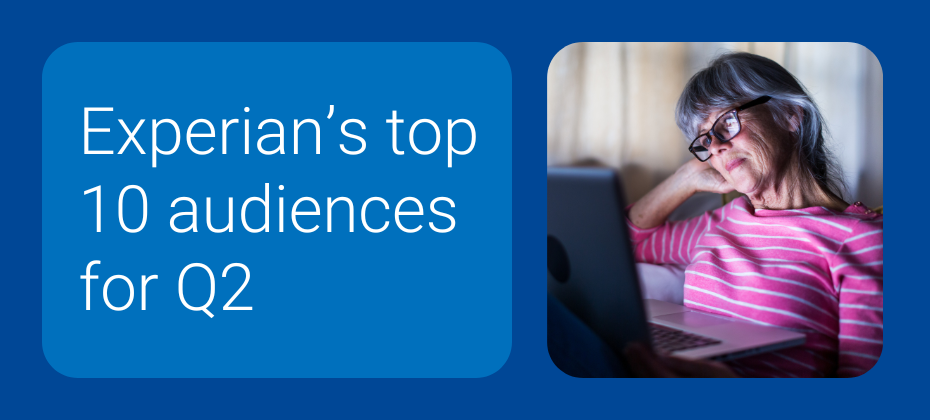At A Glance
Identity resolution unifies fragmented IDs into complete customer profiles, helping companies understand their audiences and deliver personalized, privacy-compliant experiences in a cookie-light world. With Experian’s AI-powered identity resolution solution, marketers gain the scale, accuracy, and compliance to compete while making marketing more human.In this article…
Every marketer has seen it: a customer browses reviews on a laptop, adds items to a cart on mobile, then “disappears.” In reality, they just likely switched devices or logged in with a different email. Identity resolution connects these scattered signals into a single profile so you never lose sight of the customer journey.
Identity resolution is what helps you keep track of customers who bounce around.
Connecting scattered signals into a single customer profile can help you deliver seamless experiences, meet strengthening privacy standards, turn first-party data into measurable results, and fuel better customer analytics.
See our identity resolution solution in action
What is identity resolution?
Identity resolution is the process of pulling together the different identifiers a customer uses and connecting them to a single profile. Without it, you’re left with an incomplete picture of the customer — like a cart tied to one email, an app login tied to another device, or a loyalty swipe that never links back to the same person.

Common identifiers include:
- Cookies: Short-lived browser data
- Emails: Plain-text and hashed
- Device IDs: Mobile advertising IDs (MAIDs) or app-based identifiers
- Loyalty IDs: Program numbers that tie online and offline activity
- Hashed PII: Personally identifiable information (PII) encrypted for privacy
Ultimately, identity resolution can help you recognize the same customer wherever they engage.
Why does identity resolution matter now?
Marketers face incomplete views, data silos, privacy regulations, and shrinking visibility:
- Rising consumer expectations: People want seamless, personalized journeys across touchpoints.
- Privacy-first environment: Consumer privacy legislation (like the GDPR, CCPA, GLBA, FCRA, and new state laws) makes compliance non-negotiable.
- Signal loss: The decline of cookies, MAIDs, and walled gardens are pushing brands toward first-party data.
Experian utilizes AI and machine learning to fill these gaps, predict behaviors, and connect signals across devices — providing marketers with a clear, privacy-safe view of their customers, even when traditional identifiers are missing.
In this environment, identity resolution matters because it gives marketers a way to deliver seamless, personalized customer experiences and engage audiences effectively while respecting their privacy. It’s the basis for turning consented first-party data into measurable marketing outcomes without sacrificing trust.
Why is identity resolution critical in a privacy-first world?
Even as cookies linger, marketers have already shifted their strategies to rely on first-party data, where choice and transparency are the baseline expectation. At Experian, our long history as a regulated data steward makes us a uniquely capable and trusted partner for managing modern compliance expectations. Our identity resolution solutions maximize the value of permission-based data while meeting consumer demand for privacy, personalization, and control.
Struggling with scattered customer data? Experian makes identity resolution seamless
How does identity resolution help brands?
Identity resolution turns fragmented signals into unified profiles that drive personalization, efficiency, and compliance. Here’s how it creates measurable business impact.
Creates a unified customer view
One of the biggest advantages of identity resolution is the ability to integrate data from loyalty programs, point-of-sale (POS) systems, customer relationship management (CRM) platforms, web analytics, and offline sources into a single, comprehensive profile. Experian strengthens identity resolution with AI-driven clustering models that resolve household and individual identities across billions of signals with greater accuracy.

With a clearer picture of each customer, brands see higher match rates and larger addressable audiences, which translates to more substantial reach and better return on ad spend (ROAS).
Enables better personalization
Customers constantly switch devices, update their information, and change preferences. Experian makes it easier to keep pace with these changes through frequent data enrichment and near-real-time identity resolution via Activity Feed.
Combined with our long-standing use of AI and machine learning, this approach ensures shifting behaviors are captured quickly, enabling timely personalization, and more responsive engagement.

With less delay from data to action, the result is faster response times and higher conversion rates.
Improves the customer experience
Customers notice when brands deliver relevant ads and contextual content across every channel. Consistency matters! But consistency doesn’t just happen on its own; it comes from identity resolution, which keeps the customer journey connected.

As brands maintain continuity, they build trust, strengthen engagement, and increase customer lifetime value.
Drives better marketing ROI
Not every profile is valuable. Identity resolution helps marketers identify the highest-value audiences and reduce wasted spend.

That efficiency leads to lower CPA and a higher overall ROI across campaigns.
The power of modeling from a stronger foundation
When you have a unified customer view, your models are built on better data. That means you can find more people who look like your best customers, build more responsive audience segments, and target with greater accuracy. This foundation can lead to better spending, more relevant campaigns, and a higher ROI.
Maintains privacy compliance
With GLBA/FCRA-grade standards and consumer choice mechanisms like opt-outs and data correction, you can protect your brand while maintaining personalization — without compromising legal or ethical safeguards.

What are some identity resolution use cases and examples?
Every industry faces its own unique identity challenges, but identity resolution is the common thread that turns scattered data into connected experiences. Let’s break down how companies in different verticals are putting it to work (and the kinds of results they’re seeing).
Retail and e-commerce
Shoppers bounce between websites, carts, and checkout lines, leaving behind scattered signals in the process. In retail, identity resolution bridges the gap between online and in-store experiences by matching online carts with loyalty swipes or connecting connected TV (CTV) exposure to in-store sales. This means fewer silos, better targeting, and more personalized offers wherever people shop.

Our 2025 Digital trends and predictions report calls out that omnichannel experiences aren’t optional anymore. With CTV and social dominating spend, brands need identity resolution to cut through silos and build a complete view of customer behavior.
Financial services
In financial services, identity resolution makes it possible to deliver personalized, compliant offers like refinancing options for likely mortgage switchers or the right rewards card for frequent spenders.
Our partnership with FMCG Direct to create Consumer Financial Insights® and Financial Personalities® segments helps banks, insurers, and lenders understand behaviors — such as credit card use, deposit balances, and investment habits — without exposing sensitive details.
Read more below about how our financial audiences enable privacy-safe personalization.
Travel and hospitality
Travel decisions aren’t always planned out in advance. Many bookings happen spur-of-the-moment, which is why real-time identity resolution is so powerful; it keeps the journey seamless when travelers jump from phone to laptop to tablet and presents relevant offers right as decisions are being made.
Windstar Cruises put this information into action with Experian’s identity graph to connect digital interactions with actual bookings, which drove 6,500+ reservations and $20 million in revenue.
Media and TV
Viewers tend to hop around between linear TV, streaming apps, and social feeds. And without identity resolution, every screen looks like a different person. Marketers can accurately plan, activate, and measure campaigns by unifying viewing behaviors into one ID with Experian’s AI-powered identity graph.

Optimum Media tackled its multiscreen challenge by partnering with Experian for identity solutions. Layering our audience insights and our AI-driven Digital Graph onto their subscriber data, they were able to connect the dots across channels, reach the right households, and measure results instead of just impressions. In the end, they finally got a clear view of what works across every screen.
Curious how identity resolution can power your customer analytics? We can walk you through it.
Healthcare and pharma
Healthcare marketers can’t afford slip-ups with HIPAA regulations. Identity resolution makes it possible to engage the right patients and providers with de-identified audiences rather than third-party cookies.

At Experian, AI and machine learning have always been part of how we power identity resolution. In healthcare, that means using AI-enhanced modeling to connect de-identified clinical and claims data with lifestyle insights. The result is a more comprehensive picture of the patient journey that helps close care gaps, reduce wasted spending, and improve outcomes.
By working with partners like Komodo, PurpleLab, and Health Union, we make it possible to activate campaigns at scale that boost engagement and adherence while keeping patient privacy front and center:
- Komodo Health enriches our identity graph with insights from millions of de-identified patient journeys plus lifestyle data, giving brands a fuller view of where care gaps exist and how to close them.
- PurpleLab connects real-world clinical and claims data to Experian’s platform, letting advertisers activate HIPAA-compliant audiences across CTV, mobile, and social with the ability to measure real outcomes like prescription lift and provider engagement.
- Health Union contributes a data set built from 50 million+ patient IDs and 44 billion+ patient-reported data points. Combined with our identity and modeling capabilities, this expands match rates and unlocks up to 76% net-new reach, so campaigns reach patients and caregivers in critical health moments.
As a result, healthcare brands can launch campaigns that are privacy-first, highly targeted, and proven to drive meaningful impact.
Audio
People use audio while commuting, working out, and even folding laundry. It can be one of the hardest channels to track because of how frequently listeners switch between apps, stations, and devices.

Experian’s identity resolution partnerships with Audacy and DAX change the game:
- Audacy helps tie scattered listening into a single view, so advertisers can follow audiences across devices and keep ads relevant in the moment.
- DAX pairs Experian’s 2,400+ syndicated audiences with its audio network, enabling brands to target precisely and launch impactful campaigns at scale.
These partnerships turn audio into an accurate channel where ads feel personal, privacy-safe, and measurable.
Gaming
Gamers don’t stick to one platform. Player data gets scattered across mobile, console, and PC, so it’s tough to keep track of individuals. Experian helps stitch those signals together so publishers can finally see the whole picture, personalize gameplay, and keep players coming back.
With enriched profiles, publishers can deliver offers that resonate and unlock fresh revenue by packaging high-value gaming audiences for advertisers outside the industry.
Unity, a leading gaming platform, is tapping into Experian’s syndicated audiences to gain player insights and help advertisers reach gamers across mobile, web, and CTV. For global publishers, unifying player data with Experian has driven higher engagement and stronger ad ROI.
How should I evaluate identity resolution providers?
When choosing an identity resolution partner, look for:
- Data scale and quality: The value of identity resolution depends on how complete and accurate the underlying data is. The right provider should bring together a wide range of identifiers from online and offline sources, maintaining high accuracy so your customer profiles are broad and reliable.
- Match accuracy and recency: The best partners also refresh their data regularly and can blend deterministic (exact, one-to-one matches) with probabilistic (pattern-based matches) methods. That way, you get the accuracy of “this email is definitely that customer” with the reach of “this device likely belongs to the same person.”
- Privacy and compliance readiness: Compliance can’t be an afterthought. Your identity partner should be ready for GLBA, FCRA, GDPR, CCPA, and the latest state-level rules with built-in tools for opt-outs, corrections, and deletions.
- Integration flexibility: A good provider fits into your world, not the other way around. Look for pre-built integrations with your customer data platform (CDP), demand-side platform (DSP), or marketing tech (MarTech) stack so you can get up and running without the heavy IT lift.
- Data analytics capabilities: You need proof that identity resolution drives ROI. Look for closed-loop measurement that ties unified IDs directly to campaign performance, so you can see what’s working and optimize with confidence.
How Experian enables enterprise-grade identity resolution
Experian delivers identity resolution at the scale, accuracy, and compliance required by the world’s largest enterprises. Our solutions are:
- Built on trust: Backed by 40+ years as a regulated data steward and rated #1 in data accuracy by Truthset, so you can act with confidence.
- Powered by our proprietary AI-enhanced identity graph: Combining breadth, accuracy, and recency across four billion identifiers, continuously refined by machine learning for maximum accuracy.
- Seamlessly connected: Pre-built data integration with leading CDPs, DSPs, and MarTech platforms for faster time to value.
- Always up to date: Frequent enrichment and near-real-time identity resolution through Activity Feed for timely personalization and more responsive customer engagement.
- Privacy-first by design: Compliance with GLBA, FCRA, and emerging state regulations baked in at every step, supported by rigorous partner vetting.
The bottom line
Identity resolution turns fragmented signals into connected, measurable, and compliant experiences. From retail to gaming, brands using it see stronger personalization, engagement, and ROI.
With Experian, you get the data, trust, and responsible AI innovation to make identity resolution work across every channel. Our approach uses AI to connect identities, predict behaviors, and deliver personalization that balances privacy with performance. If you’re ready to turn fragmented data into growth, now’s the time to start.
The world’s leading brands trust us to power identity resolution at scale. See how we can do the same for you.
Identity resolution FAQs
Deterministic uses exact identifiers (like an email) for accuracy, while probabilistic uses signals and algorithms to expand reach. Best-in-class providers usually combine both.
Identity resolution helps with personalization by unifying scattered signals into one profile. It reduces wasted spend and increases match rates, which means bigger addressable audiences and higher ROAS.
Yes. With first-party data and hashed PII, brands can still maintain addressability and personalization.
Retail, finance, travel, media, gaming, and audio all use identity resolution to personalize, attribute sales, and improve efficiency.
A customer data platform unifies the data you already own. Meanwhile, we add depth, scale, and higher match rates by layering in our identity graph and data enrichment.
Yes. Experian is GLBA/FCRA compliant, GDPR/CCPA ready, and supports consumer opt-outs and corrections to ensure responsible personalization.
Latest posts

At Experian, we understand the critical role that audience targeting plays in the success of marketing campaigns. That's why we're excited to share this curated list, aimed at helping agencies and media buyers plan their campaigns and effectively reach their audiences with precision and confidence. What separates Experian's syndicated audiences Experian’s 2,400+ syndicated audiences are available directly on over 30 leading television, social, programmatic advertising platforms, and directly within Audigent for activation within private marketplaces (PMPs). Reach consumers based on who they are, where they live, and their household makeup. Experian ranked #1 in accuracy by Truthset for key demographic attributes. Access to unique audiences through Experian’s Partner Audiences available on Experian’s data marketplace, within Audigent for activation in PMPs and directly on platforms like DirectTV, Dish, Magnite, OpenAP, and The Trade Desk. Here's a look at the Experian audiences that were the most popular in Q2 2023. Which ones will you add to your Q2 campaign planning? Our top 10 audiences for Q2 Fitness enthusiast Lifestyle and Interests (Affinity) > Health & Fitness > Fitness Enthusiast In-store high spender on baby products Retail Shoppers: Purchase Based > Shopping Behavior > Baby Products: In Store High Spenders Has a bachelor’s degree Demographics > Education > Bachelor Degree In-market for an SUV and CUV Autos, Cars and Trucks > In Market-Body Styles > SUV and CUV In-market for a mid-size truck Autos, Cars and Trucks > In Market-Body Styles > Mid-Size Truck Homeowner Demographics > Homeowners/Renters > Homeowner In-market for a small, mid-size SUV Autos, Cars and Trucks > In Market-Body Styles > Small Mid-Size SUV In-market for a full-size truck Autos, Cars and Trucks > In Market-Body Styles > Full-Size Trucks In-market for a full-size SUV Autos, Cars and Trucks > In Market-Body Styles > Full-Size SUVs Household income level Demographics > Household Income (HHI) > $75,000+ Our top 5 audiences by vertical Which audience segments were the most popular by advertiser vertical? Advanced TV Household income level Demographics > Household Income (HHI) > $75,000-$99,999 Interested in dogs Lifestyle and Interests (Affinity) > Pets > Dogs (FLA / Fair Lending Friendly)1 Homeowner Demographics > Homeowner/Renter > Homeowner Household income level Demographics > Household Income (HHI) > $100,000-$124,999 Interested in arts and entertainment Lifestyle and Interests (Affinity) > Art and Entertainment > Visual Art and Design (FLA / Fair Lending Friendly) Agency Dog owner Lifestyle And Interests (Affinity) > Pets > Dog Owners Cat owner Lifestyle And Interests (Affinity) > Pets > Cat Owners Active investor Lifestyle And Interests (Affinity) > Investors > Active Investor Mutual fund investor Lifestyle And Interests (Affinity) > Investors > Mutual Fund Investor In-market for a full-size SUV Autos, Cars and Trucks > In Market-Body Styles > Full-Size SUVs Auto In-market for a new car Autos, Cars and Trucks > In Market-New/Used > New Car In-market for a used car Autos, Cars and Trucks > In Market-New/Used > Buyer Used In-market for a Honda Autos, Cars And Trucks > In Market-Make And Models > Honda In-market for an auto loan Financial FLA Friendly > In Market Auto Loan In-market for an auto lease Financial FLA Friendly > In Market Auto Lease Did you know? Consumers looking to buy a new vehicle prefer streaming TV, digital newspapers, and email for communication2. By merging our TrueTouchTM engagement channel audiences with our Auto in-market audiences, you can effectively target these consumers through their preferred channels. TrueTouch facilitates personalized advertising campaigns by predicting consumer preferences, ensuring messaging styles align with the right channels and calls to action. By understanding what types of media people prefer, you can match the best way to talk to them with what to offer, using the right channels for personalized ads. No consumer is the same – and you need to engage with them on their terms to successfully market to them. Financial Active in the military Lifestyle And Interests (Affinity) > Occupation > Military – Active In-market for a credit union loan Financial FLA Friendly > In Market Credit Union Loan 40-49 years old Demographics > Ages > 40-49 30-39 years old Demographics > Ages > 30-39 Small business owner Consumer Behaviors > Occupation: Small Business Owners Health 25-29 years old Demographics > Ages > 25-29 30-34 years old Demographics > Ages > 30-34 Weight conscious Lifestyle and Interests (Affinity) > Health & Fitness > Weight Conscious Moms interested in fitness Lifestyle and Interests (Affinity) > Moms, Parents, Families > Fitness Mothers High spenders at vitamin/supplement stores Retail Shoppers: Purchase Based > Health and Fitness > Vitamins/Supplements: Vitamins/Supplements Retail & CPG Dog owners Lifestyle And Interests (Affinity) > Pets > Dog Owners Cat owners Lifestyle And Interests (Affinity) > Pets > Cat Owners Fitness enthusiast Lifestyle and Interests (Affinity) > Health & Fitness > Fitness Enthusiast Interested in healthy living Lifestyle and Interests (Affinity) > Health & Fitness > Healthy Living High spenders at vitamin/supplement stores Retail Shoppers: Purchase Based > Health and Fitness > Vitamins/Supplements: Vitamins/Supplements Activate the right audiences with Experian When you choose Experian’s syndicated audiences, you gain access to over 2,400 audiences that span across 15 verticals and categories. These audiences are directly available for activation on over 30 platforms and can be sent to over 200 media platforms. Experian is ranked #1 for data accuracy (as validated by Truthset) and Experian Marketing Data is the foundation for successful targeting, enrichment, and activation. For a full list of Experian's syndicated audiences and activation destinations, download our syndicated audiences guide. Need a custom audience? We can help you build and activate an Experian audience on the platform of your choice. Connect with our audience team Check out other seasonal audiences you can activate today. Contact us Footnotes Fair Lending Act Friendly audiences: “Fair Lending Friendly” indicates data fields that Experian has made available without use of certain demographic attributes that may increase the likelihood of discriminatory practices prohibited by the Fair Housing Act (“FHA”) and Equal Credit Opportunity Act (“ECOA”). These excluded attributes include, but may not be limited to, race, color, religion, national origin, sex, marital status, age, disability, handicap, family status, ancestry, sexual orientation, unfavorable military discharge, and gender. Experian’s provision of Fair Lending Friendly indicators does not constitute legal advice or otherwise assure your compliance with the FHA, ECOA, or any other applicable laws. Clients should seek legal advice with respect to your use of data in connection with lending decisions or application and compliance with applicable laws. Experian looked at our Auto and TrueTouch audience data to understand media preference trends over the past year. Latest posts

With the impending deprecation of third-party cookies, marketers find themselves at the crossroads of innovation and adaptation. As we bid farewell to this identifier, the emphasis shifts to forging deeper connections, understanding customer needs, and navigating the marketing landscape with data-driven precision. At Experian, we stand as your trusted partner, committed to guiding you through this transition. In this blog post, we'll explore: How third-party cookie deprecation is impacting digital advertising Six alternatives to third-party cookies and where they fall short How Experian can help you navigate a cookieless world Four ways third-party cookie deprecation is impacting digital advertising Third-party cookie deprecation is causing significant challenges within the AdTech industry, manifesting in four key areas: Reach: Advertisers and demand-side platforms (DSPs) will face difficulties in reaching their target customers due to the absence of third-party cookies. Understanding audiences: Advertisers will find it challenging to understand the demographics and behaviors of their customer base without third-party cookies. Similarly, publishers are struggling to identify their audiences accurately, resulting in less addressable and appealing inventory. Measurement: Measurement providers may encounter obstacles in accurately assessing the effectiveness of advertising campaigns. Additionally, DSPs are finding it hard to measure the impact of their ads without the assistance of third-party cookies. Matching: Data providers may experience challenges in matching users with the appropriate audience segments, leading to difficulties in delivering targeted advertising. Six alternatives to third-party cookies As the deadline approaches for Google's removal of third-party cookies from Chrome by the end of 2024, marketers are scrambling to discover alternative methods for delivering effective advertising. Fortunately, various alternatives are emerging. However, the abundance of options can create confusion rather than clarity. Which alternatives are worth considering? Here are six compelling alternatives to third-party cookies: 1. First-party data Acquiring consented first-party data directly from users is becoming increasingly vital as it can lay the groundwork for more precise targeting. 2. Universal IDs Alternative identifiers like The Trade Desk's UID2 and ID5’s Universal ID are becoming increasingly important, offering the ability to maintain a comprehensive consumer view across channels and platforms, leading to enhanced personalization and addressability across various channels, even in cookieless environments. 3. Identity graphs As browser-based IDs shift and digital signals decline, the need for an identity graph grows, with companies adopting a "graph-of-graph" strategy by combining their own robust first-party data with licensed identity graphs, as highlighted in recent announcements by industry giants such as Disney, VideoAmp, and Magnite. 4. Contextual targeting Contextual targeting aligns publisher content with relevant ads, ensuring ad delivery based on content rather than individual identifiers. This privacy-respecting approach is less dependent on third-party cookies, providing effective audience activation. 5. Data collaboration In a cookieless world, it becomes more difficult for companies to "communicate" with one another. We expect to see more pick up of data collaboration in the market, using addressable IDs and identity resolution to power connectivity between partners and their data sets. 6. Google Privacy Sandbox The primary goal of Google’s Privacy Sandbox is to continue to deliver valuable consumer information that yields relevant marketing and media strategies, while protecting a user’s privacy. How these alternatives to cookies fall short While it's promising to see numerous alternatives to cookies emerging, it's essential to recognize that each alternative has its limitations and is not a perfect one-to-one replacement for third-party cookies. Let’s review the shortcomings of these alternatives, and then we’ll walk through how Experian can help you navigate these alternatives to cookies. 1. First-party data First-party data, which is data directly collected from your users with their consent, is highly valuable. However, you will likely face limitations in terms of the number of consumers in your database, the identifiers linking them, and the insights into their demographics and behaviors. To overcome these limitations, it's essential to expand both the quantity and quality of your first-party data. 2. Universal IDs Universal identifiers are valuable for tracking users across different devices and websites. However, no single universal identifier has enough reach to fully replace third-party cookies. Universal IDs are most effective in terms of scaling, when they are combined with other universal identifiers or alternative addressable identifiers. 3. Identity graph Identity graphs excel at connecting digital audiences. However, establishing an identity graph from scratch is a significant accomplishment, demanding expertise, financial resources, and more. 4. Contextual targeting Contextual targeting and advertising aim to place your ads next to relevant content. However, there's a risk that your ads might appear alongside misaligned content, reaching audiences who are uninterested or unintended. 5. Data collaboration Data collaboration is beneficial for enhancing your consumer data and informing your strategies. However, it can introduce potential data security risks, if not done in the right framework, and may lead to subpar matching results due to issues like data hygiene or discrepancies in identifiers. 6. Google Privacy Sandbox Google’s Privacy Sandbox aims to balance effective advertising with consumer privacy and data security. However, it lacks transparency and has yet to prove its effectiveness, raising concerns about whether it meets industry standards. How Experian can help you navigate a cookieless world As an industry innovator and leader in data and identity, we've developed solutions to address the challenges posed by the shift away from third-party cookies. Our products are designed to adapt to these changes and ensure your success. We've anticipated industry shifts and proactively prepared our offerings to support you through this transition. Below we outline how our products are ready to support you through the transition away from third-party cookies. Graph The Experian Graph facilitates connectivity without relying on cookies. Our Graph helps ensure connectivity by supporting a variety of addressable identifiers, not limited to but including universal IDs, like Unified ID 2.0 (UID2) and ID5's universal ID. Whether you have first-party data or not, our Graph can be used to expand the reach of your first-party data or provide you with access to the full scope of our Graph's 126 million households and 250 million individuals. Activity Feed Supported by our Graph, Activity Feed can help you deliver digital connectivity and resolution in a cookieless environment. Activity Feed can resolve disparate activity to a single, consumer profile. It can expand the quantity of addressable identifiers associated with your first-party consumers. Additionally, Activity Feed, by joining disparate activity and identifiers, provides clearer insights, more addressable targets, and more holistic measurement. Our Marketing Attributes and Audiences In a cookieless environment, our Marketing Attributes and Audiences provide valuable information and insights about who your consumers are, like their demographics, shopping patterns, and more, to facilitate more informed decision-making. You can use our Marketing Attributes and Audiences to enrich your first-party data, giving you crucial insights into your customers so you can make informed, strategic decisions. They can be matched to universal identifiers, expanding their utility. Additionally, our Marketing Attributes and Audiences are sourced from non-cookie dependent offline and digital sources, ensuring they are unimpacted by third-party cookie deprecation. Collaboration While third-party cookies have primarily served to connect data in the industry, many companies are turning to data collaboration in lieu of having third-party cookies. In doing so, they can connect data with key partners, which they can use to make better media decisions. Experian Collaboration helps make data collaborations better, powering higher match rates by using the various identifiers supported in our offline and digital graphs. Through our current support of collaboration in three environments, within Experian, through crosswalks, and in clean rooms, such as AWS, InfoSum, and Snowflake, we ensure that you only share the data you intend to share, while the sensitive information remains secure. This way, your partner and you can focus on how to use the data to benefit you and not on anything else. Get started with alternatives to third-party cookies today While many view the deprecation of third-party cookies as disruptive, we see it as an opportunity for the industry to embrace a new era of advertising while prioritizing consumer privacy. Achieving this balance is crucial, and Experian's solutions are here to help you navigate it effectively. As the AdTech industry gravitates toward a few tactics to effectively advertise in the cookieless future, Experian is here to understand your core needs and recommend products that will help. In a rapidly evolving marketing landscape, Experian stands as your trusted partner, offering expertise in data-driven and identity solutions. Connect with our team to seamlessly transition into these alternatives to third-party cookies, ensuring your marketing strategies remain effective, privacy-compliant, and focused on meaningful connections. Get started today Latest posts

In the ever-evolving and soon-to-be cookieless advertising world, brands and agencies need help finding and maintaining access to accurate and comprehensive marketing data that enables them to reach the audience segments that matter most. Flashtalking by Mediaocean and Experian have a collaboration in place to do just that. Through this partnership, Experian’s more than 2,400 syndicated audiences are available for activation within the Flashtalking platform and its Social Ads Manager. “There are a lot of audience segments and data disappearing within the advertising industry right now because of the deprecation of third-party cookies, but Experian’s syndicated audiences are built for this new privacy-first world. Through this partnership, Flashtalking's clients gain access to some of the industry's most actionable on-the-shelf and custom audience capabilities for activation and targeting across the publishers and social platforms that matter most. It’s as easy as identifying the segments that matter to your brand and activating them everywhere they exist with a few simple clicks.” – Ben Kartzman, COO, Flashtalking by Mediaocean This partnership unites the power of Flashtalking's best-in-class independent omnichannel advertising platform with Experian’s comprehensive audience intelligence, which spans 126 million households and 250 million consumers. “For the same reason that brands are investing more deeply in first-party data in the wake of third-party cookie deprecation, having access to the right audience segments has never been more important. Mediaocean offers access to the only independent ad server that’s powering truly omnichannel, personalized experiences, and we’re thrilled to be amplifying their ability to do that through Experian’s expansive audience segments.” – Colleen Dawe, Director, Sell-Side Sales, Experian The Flashtalking Social Ads Manager has long-standing relationships and technical integrations with all major platforms, including Facebook, Google Demand Gen, Instagram, LinkedIn, Pinterest, Snap, TikTok, and a forthcoming integration with Reddit. Experian data can be deployed through custom and syndicated segments within these platforms, providing clients with both reach and precision. The power of the Experian – Flashtalking collaboration Benefits to marketing organizations that tap Experian data and audience segments via the Flashtalking platform include the following: A unified customer view: Marketers can use Experian's comprehensive data within Flashtalking to create a unified view of the customer across multiple channels. This helps craft cohesive marketing strategies that deliver consistent messages, enhancing customer experiences and brand perception. Enhanced targeting and personalization: Marketers can access Experian's detailed audience segmentation and insights within Flashtalking to target campaigns effectively. They can personalize messages at scale based on demographic, psychographic, and behavioral data to increase engagement and conversion rates across all channels. Optimized cross-channel strategies: With Flashtalking's cross-channel capabilities, marketers can integrate Experian's insights to understand how different segments interact with various channels. This enables the design of optimized cross-channel strategies that cater to the preferences and behaviors of different audiences. Data-driven decision-making: This partnership combines Experian's in-depth consumer insights with Flashtalking's analytics and reporting tools to help marketers make informed decisions. This data-driven approach can improve campaign performance, optimize media spend, and reveal untapped market opportunities. Local market activation: Marketers can also use Experian's geographic and location-based data within Flashtalking to tailor campaigns to local markets. This localized approach can enhance relevance and response rates, providing a competitive edge in regional marketing efforts. Improved media efficiency: This collaboration also enables organizations to harness the power of Experian's data within Flashtalking to improve media planning and buying. They can identify the most effective channels and timeframes for reaching specific audiences, leading to more efficient and cost-effective media investments. Why choose Experian in Flashtalking For over 50 years, we have been a trusted single-source provider of data management solutions. Our expertise in offline and digital identity has enabled us to curate data from over 200 direct and active sources, offering a comprehensive view of consumers with granularity, accuracy and scale. Using this data, we can craft our syndicated audiences to cover many verticals and specialty categories. For example, a Flashtalking client in the automotive industry can supercharge its campaign efforts. Experian has found that automotive advertisers build segmentation using four major data categories: Automotive Demographics Lifestyles and Interests Retail Shoppers: Purchase-Based Directly within the Flashtalking platform, multiple syndicated audiences from Experian in each major data category specific to automotive are available that brands and agencies can activate on-the-shelf to reach consumers with targeted messaging and retargeting. Experian and Flashtalking are future-proofing advertising Together, Flashtalking and Experian will ensure advertisers can continue to deliver personalized, relevant, and impactful messages and experiences to consumers despite ongoing shifts within the data-driven marketing landscape, including the deprecation of third-party cookies in Chrome. This partnership offers greater access to audience segments built on privacy-safe insights with expansive reach, scale, and flexibility. Connect with us to learn more about how you can access Experian’s syndicated audiences through Flashtalking by Mediaocean. Contact us today About Flashtalking by Mediaocean Flashtalking unleashes the power of creative to make media work better. As the leading independent platform for personalization and intelligence across all marketing channels, our Creative Ad Tech bridges the gap between creative and media. We provide AI and automation to connect the silos between teams and deliver more efficient production, versioning, and distribution of creative. Our solutions operate at scale across CTV, Video, Display, Social, Native, Audio, DOOH, and Retail Media channels. As part of Mediaocean, Flashtalking is tied into the industry’s core ad infrastructure for omnichannel planning, buying, and billing. Visit flashtalking.com to learn more. Latest posts